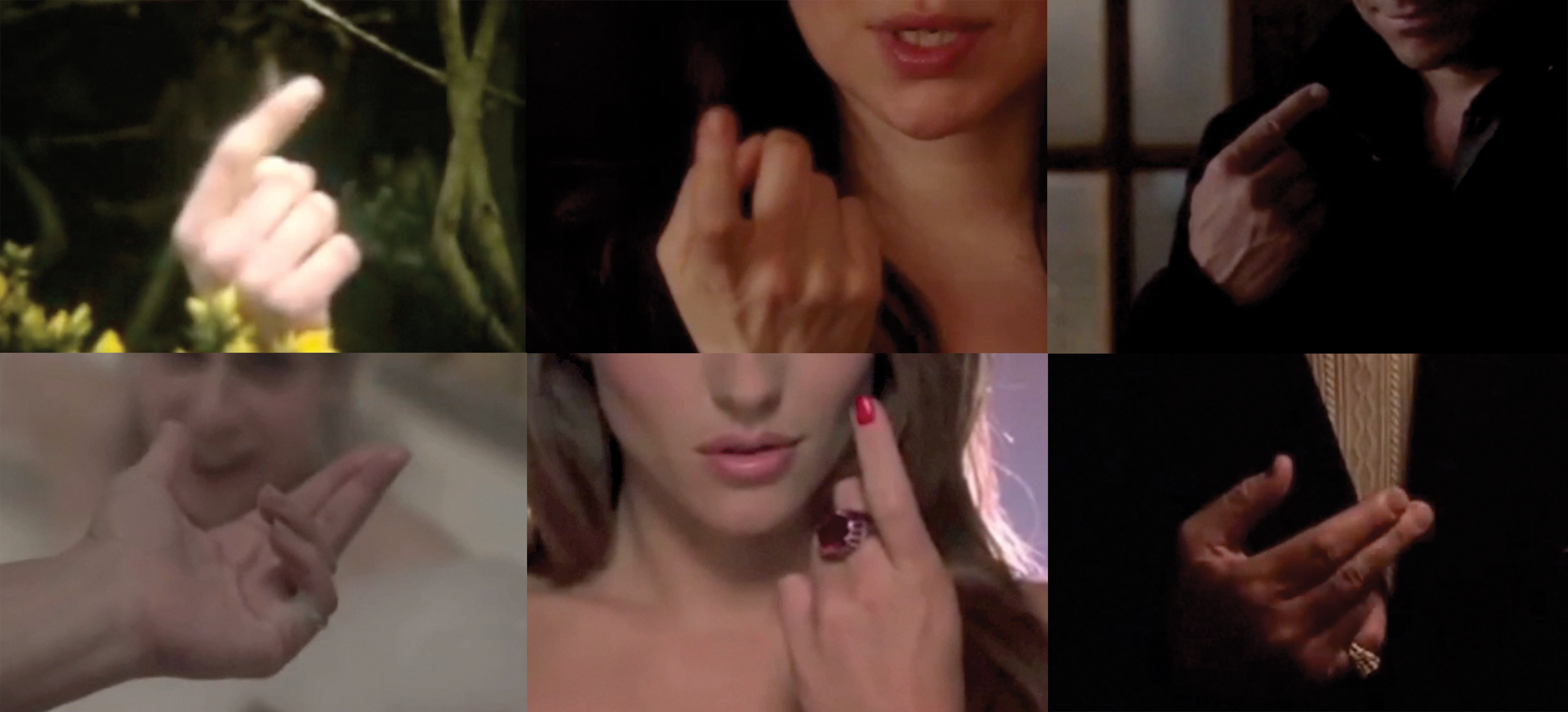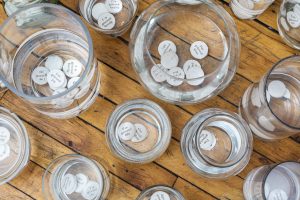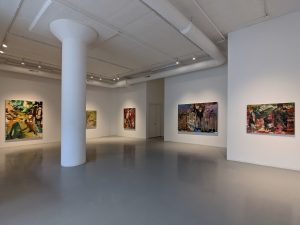“Intimate Justice” looks at the intersection of art and sex and how these actions intertwine to serve as a form of resistance, activism, and dialogue in the Chicago community. For this installment, we talked to Jeanne Donegan in her warm apartment over wine and chocolate about pleasure as a spectrum, the mouth as a vagina, and the importance of desire.
This interview has been edited for length and clarity.
S. Nicole Lane: I stumbled upon your work and it was the video piece—I think it’s called “Sink,”—when I first moved to Chicago, so a few years ago, I guess.
Jeanne Donegan: Oh, cool.
SNL: And then somebody emailed me—a colleague from Sixty [Greg]—and they were like, “Hey, you should look at this artist for your column?” And I freaked out when I saw that “Sink” video because I was like, “Oh my god!” I loved this person’s work and so I’m glad it’s made it full circle.
JD: Yeah. That’s so cool. It’s always so cool to hear when people are talking about me behind my back.
SNL: A lot of your video pieces are mostly you—you’re the subject in the piece. Can you talk about that a bit?
JD: Yeah, so I started—just to kind of go to the beginning—I started doing self-portraiture in the middle of grad school. Portraiture itself was always super interesting to me, and I was working on some projects where I was photographing men I was matched with on Tinder, so I was doing their portraits, working on some earlier ideas of flipping the male gaze, being the one with the power in the looking. But yeah, over time, I started stepping into those photographs. I would pose with them—would take images that were much more performative—and that’s what sort of led me into, one, photographing myself, stepping in front of my camera, and then also doing video work. Because the interactions that I was having with these people were much more interesting than the photo was able to convey.
Video of “Sink” by Jeanne Donegan, 2015. Courtesy of the artist.
Also things from my personal life, too. I was entering into a relationship during that time and so photographing people from Tinder was a little more tricky. [both laugh] I started getting a lot more introspective about the things I was talking about, which were like sex and intimacy, desire, pleasure. And just started thinking more internally about what those things meant and how I related to them. I started thinking about sex and my work as more of an opportunity to talk about female pleasure, and independent of another person. So that’s the series of videos that “Sink” is a part of— very much these solitary, masturbatory acts that I’m performing—that talk about pleasure in a spectrum.
SNL: Right. Yeah. And viewing them, it is very pleasurable. I was thinking about how, in a way, it’s very meditative to watch your pieces or videos—especially the one where you’re rubbing your face. It’s like you’re in this trance, watching this very slow-moving video piece. And then there’s this moment of pleasure afterwards.
JD: That’s what I do when I watch it, too.
SNL: Yeah, it’s so great. Or with, “Sink” where it just cuts out. As the viewer, you’re pleased that this moment finally happened, but you can’t really even fully experience it, because it was just gone in a moment. Anyways. So while I was watching those pieces, I was also thinking about the sound in them and how they don’t lack a sound. I think it’s important to have the sound of your lips being rubbed. And there’s another piece with you and someone else where you’re breathing simultaneously. Could you talk about the decision to not include some sort of music or is it important to you to have that natural sound that’s coming from you?
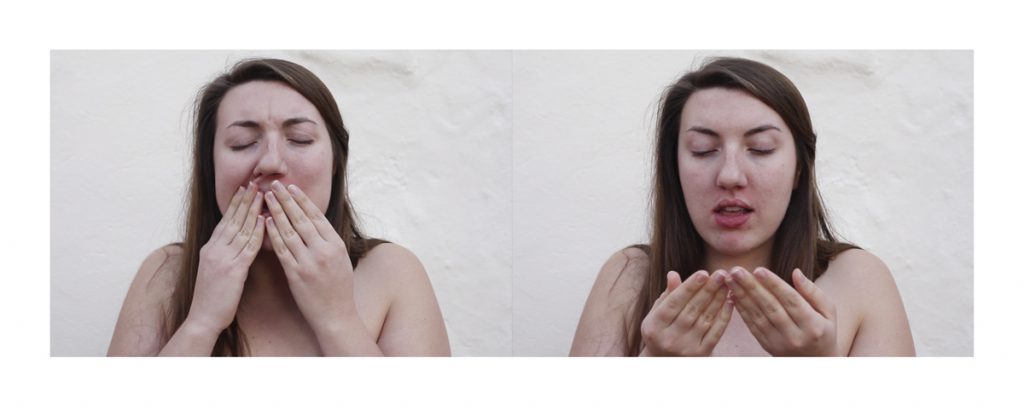
JD: Yeah, definitely. Definitely. Those sounds are really important—those body sounds. Especially in “Rub,” the squishiness of that—that’s super important—and that piece “Milk,” sucking on that frozen ball of milk, that’s a really, really quiet piece except for the fact that you can hear my heat turning on in the background. [both laugh] But yeah, that’s a really quiet piece. But those few moments where you can hear that sucking of liquid are really important to me, especially towards the end, as this act becomes a bit more arduous, and harder and harder to do after—I think it’s a 48-minute piece—the breathing and kind of the exertion of that…all those little things for me build up that tension a lot.
I also wanted to respond to what you were saying about how “Sink” cuts really quickly. So with all those pieces they are like mouth meditations in a way. I’m using the mouth as a metaphor for the vagina a lot of the time, and so, for me, all those videos that are focused on the mouth are sort of spectrums of orgasm. What I wanted to talk about was just the complexity of female pleasure and how it doesn’t necessarily look the same as a man’s. It also doesn’t necessarily look the same every time and how I feel like our bodies are capable of lots of different types of pleasure. So with “Milk,” it’s very, very long, and slow and drawn-out. It has a really satisfying ending when I finally finish this thing that’s in front of me. That’s more of a slow, long, pleasure, meditative orgasm. But “Sink” is that one that’s like, you wait, you wait, you wait, and it just sneaks up on you.
SNL: I’ve written a few articles about “the orgasm gap” and how it takes women—well, usually if they’re with a male, specifically, a male partner—it takes them, you know, 15-20 minutes to have an orgasm.
JD: Yeah. If not way longer.
SNL: Right. [both laugh] Exactly. And for lesbian couples, it takes them roughly 7 minutes.
JD: Wow. Yeah, and I wanted to mention, too, like, when women are with a partner, it takes x amount of time, where it’s like, when you’re by yourself [snaps fingers] it’s 3 minutes. And that’s a big thing that I wanted to talk about, too, with my work. I do have a couple of those video pieces with a partner in them.
But the ones that are just alone, too, I love how those just talk about pleasure and self-pleasuring without the help of someone else. And getting to know one’s own body and one’s own likes and dislikes. I think it’s very important. I actually have just recently been trying to write some stuff—I don’t really know what I would call it—just some thoughts and responses to sex, just personally. But one of the things I’ve been thinking a ton about is how masturbation and especially female masturbation and women’s pleasure is just sooo left out of the conversation of sex ed.
I read this book last year called “Girls and Sex,” by Peggy Orenstein. Have you read it?
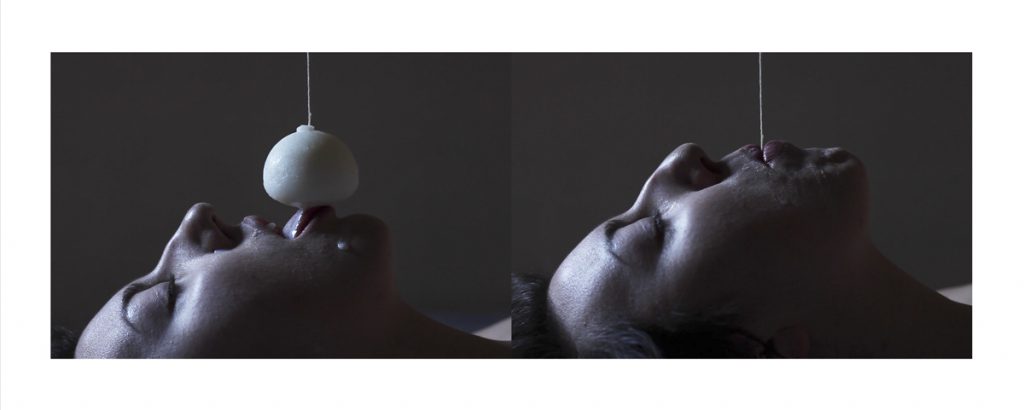
SNL: I haven’t yet. I have it on my list.
JD: It’s on my shelf. You can borrow it. But it’s really great. It’s very journalism-based. It’s journalistic. But it’s just super interesting the way she highlights this exact gap. We don’t talk about women having pleasure. And I was just thinking to myself recently, I remember talking so specifically about, “Boys are going to have wet dreams unless they masturbate. So they should masturbate.”
We talk about erections but we don’t talk about what happens to women’s bodies when they’re turned on. We don’t talk about that at all. And it’s confusing! And then you become an adult, and you enter into these sexual encounters and you barely know your own body.
SNL: Exactly. And I feel like a lot of people, when they are an adult, they’re almost too embarrassed to even research what’s going on or talk to a friend or anything. I have so many of my girlfriends still tell me, “Sorry if this is TMI,” and then they tell me this totally normal thing that we should all be comfortable talking about. And the only way we’re going to figure out if that’s normal or not is by talking about it. And it’s obviously from the lack of some sort of sex education. Yeah, and a lot of people say that porn is the new sex education. There’s so many articles circulating around right now where kids are watching porn at a much younger age, before they receive sex education, so they’re seeing sex before they’re even understanding any of it.
JD: And they’re seeing a representation of sex that is not wholly accurate and that leaves out a lot of important parts of it.
SNL: For sure. I wrote this piece about trends in porn and, you know, facials were not a thing in the ‘70s and now they are, and it’s just a trend, right? There’s nothing wrong with facials, but my point is that 14-year-olds watch it and they think that’s just the normal way to end an orgasm. And that might be not okay with your partner. And I think they don’t even know how to talk about it. Anyways, I’m going off on a tangent.
JD: No, I am too. I just wrote about this for a really long time. A lot of hours. But also, it’s one of the driving factors about the work I’m making, too. I want to be talking about pleasure, and I want to be talking about sex really openly. If I had encountered work like this when I was that age, it would have been really important to me.
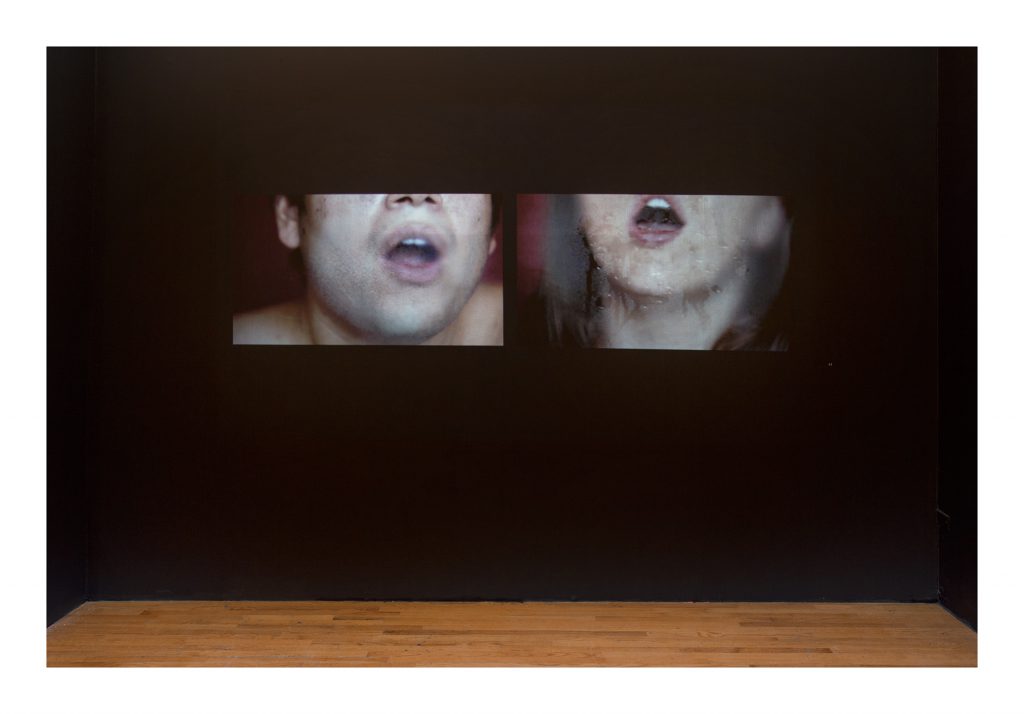
SNL: Have you ever worked with another individual as the subject in the video? Just them?
JD: Yeah. I haven’t done anything particular yet with just directing someone else in a video. For me, there’s something really important about the experiencing of the act, too, that I’m filming.
SNL: It’s performative.
JD: Yeah. It’s very performative. So that feels important to me. But I’ve made some videos with a previous partner and then—prior to even starting video work, really—as I was photographing these guys that I was meeting from Tinder, I had started stepping into the photograph and doing these performative things for the photograph.
It kind of depends on where I’m at in my personal life honestly. I’m starting a new collaborative project with a friend right now. It’s a time when I’m starting to open my work back up and be more of the director, I think.
SNL: Yeah. I think it’s interesting. I studied photography so I was always taking self-portraits. And I felt like it was a very meditative—going back to talking about meditation—it was always really meditative to be behind the camera and have that sense of you know exactly what you want, right?
JD: It’s difficult to communicate that to somebody else.
SNL: It can be, yeah. Back to the Tinder project: you’re actually taking photos of the people that you meet?
JD: I was doing that for a while.
SNL: You’re not doing that now.
Video “Looking For Love” by Jeanne Donegan, 2016. Courtesy of the artist.
JD: Tinder’s one of those things—again, reflective of my personal life at the time—but I think it’s a super fascinating photographic thing. So it’s crept into my work in various ways over the last few years. I started by photographing people I was matching with. I wasn’t dating any of those people. I was purely using it as this research study method.
But then I kind of culminated that part of that project by printing out a stack of all my matches at the time. I have this piece of a Phaser-printed ream of paper with just a tiny 2×2” photograph from their profile in the center of an 8.5×11” sheet, so as to emphasize how small this image is that we’re judging each other by. So I printed out that stack of papers—not really knowing what I was going to do with that yet, I just kind of wanted to see the physicality of this virtual method that I’m using—and to see the physical stack, to hold the weight of that, was very eye-opening for me. It just looked like a beautiful object. I placed my own profile picture on top—which was actually just the back of my head, too, because I thought it was interesting at the time. And then even last year I made a video piece that’s just my hand sitting on a table, titled “Looking for Love.” It’s super simple. It’s just my thumb, swiping back and forth, without a phone. It was interesting to come back to this subject after having made all those other video pieces—that are very gestural—and using gestures that are kind of going back and forth between casual and seductive, sexual. So that hand motion of just the swiping of the thumb started—as I was doing that without my phone in my hand—it started to look really sexual. I showed that in my artist residency show at Lillstreet this past summer and that piece was interesting in how people reacted to it. Because some people were like, “Oh, this gesture is so familiar, at this point,” but older generations were like, “I don’t really get it, I don’t really get what you’re doing there.” [Nicole laughs] And I’m like, “Don’t worry about it.”
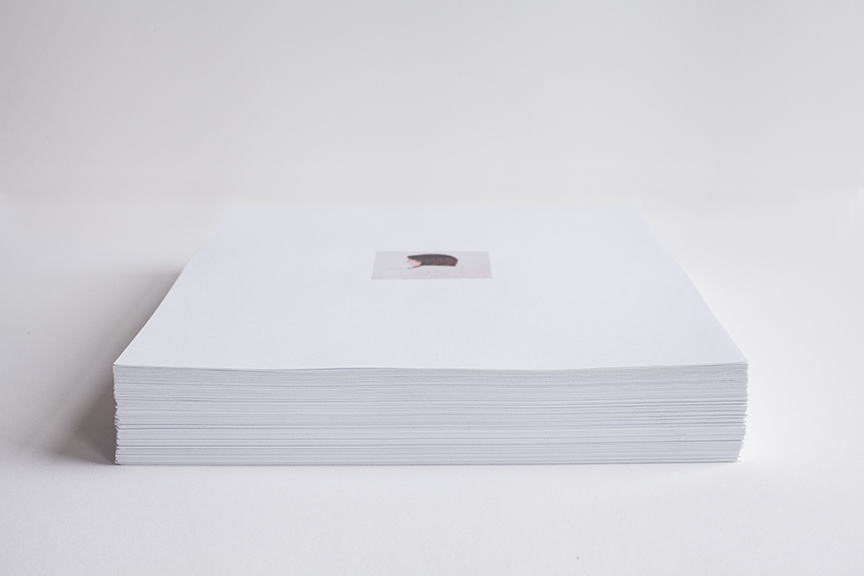
SNL: You’re basically curating your entire personality in these, like, five or four photos.
JD: And I love, too, the kind of irony that I have to participate in it in order to access it. So I like that there’s sort of a shared vulnerability there.
SNL: Do you see your work as a form of resistance?
JD: Yeah, definitely. It took me a while to settle into that role, of my work being greater than myself, if that makes sense. But I definitely feel I share the same sentiments, that it feels more important now than ever. I think that my practice has slowed down a bit recently as a means of kind of reflecting on, it is more important now than ever. The things I say have greater weight and they mean more, and I want to be careful about what I’m saying and what I’m spending my time saying. I’m making sure that’s adding to the conversation in a productive way, as opposed to a self-indulgent kind of way.
I feel like it’s still incredibly important to talk about sex. Sex is so influential of so many things, especially when it comes to reproductive health and assault and talking about pleasure. Especially the way we raise young girls, and the ways we treat women, valuing pleasure, valuing consent, are so vital to me. Just being autonomous as a woman feels really important. And that’s part of the reason I like to do a lot of solo video, too. That idea of getting to know yourself and your own desires is really important to me, in the way that you make decisions, you know? And making sure that what you’re doing is right for you, and services yourself.
SNL: Have you always worked with themes of pleasure and femininity?
JD: No, I haven’t always done that. I’m 27, so I’m still growing into my work—but I’ve been working with these themes, specifically, for at least four years now. And it feels really right. The moment this started happening it felt like, “This is the thing that I’ve been wanting to talk about and didn’t know how.”
SNL: Yeah. Cool. And do you see yourself working with this forever or–?
JD: Yeah, I wouldn’t want to–
SNL: –say “forever”–
JD: – say “forever,” but I do see myself working with this subject matter for a long time. It feels broad enough. Right now I’m thinking more about love and intimacy than I am about sex specifically. I feel like that’s such a wide umbrella. I feel like over the trajectory of my life—as, you know, my life goes in and out of different changes and phases—I’ll be approaching this same subject very differently throughout my life.
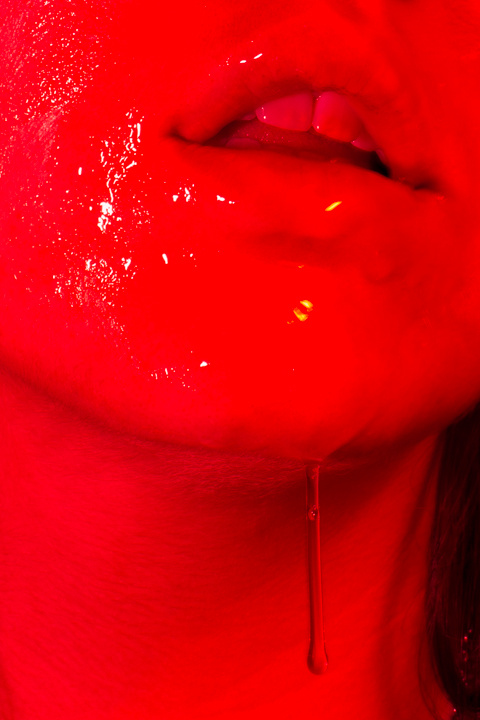
SNL: Right. Yeah, and especially if you continue using yourself as the subject, it’ll be interesting to see how you change and how your thoughts on all this change as well.
JD: Definitely. I have some friends who I talk to who make work about intimacy and are older women, and that conversation is really important and interesting. Older women, often, in our society feel invisible, as if they don’t have sexual urges. When really, for women, our sexual desires peak much, much later. So yeah, I think that it’ll fascinate me for a long time.
SNL: Are you working on anything right now? Any new projects?
JD: Yeah, so I just started this new project with my friend Grant Gil, who’s an amazing photographer. It’s still very early, but it’s going to be really interesting, and it’s a really exciting project to work on with him, too, because we haven’t worked together before. It’s certainly in the wheel house of both of our interests, which is kind of cool.
I’ve been doing a lot of collaboration the last year, with some other artists that I’m close with, too. And I find that to be kind of interesting ground, when you can find overlaps in practices with people. I graduated from grad school a couple of years ago, and grad school’s really not a place that is very conducive to collaboration, so that’s an exciting thing to do. I’ve been trying to work on some writing recently. Writing’s not really my forte, but, especially after having spent several years intensively working and creating visual stuff, there’s just been lots of thoughts that have arisen through that, so I’m just starting to work on writing those down and thinking about the future of even making a book project, that combines a little bit of writing and some of my images over the last several years.

Featured Image: Video still from Come, 2016. Six images are displayed with three on the top and three on the bottom. Each image features a “come here” hand motion. Images courtesy of the artist.
 S. Nicole Lane is a visual artist and writer based in the South Side. Her work can be found on Playboy, Broadly, Rewire, SELF, and other corners of the internet, where she discusses sexual health, wellness, and the arts. Follow her on Twitter.
S. Nicole Lane is a visual artist and writer based in the South Side. Her work can be found on Playboy, Broadly, Rewire, SELF, and other corners of the internet, where she discusses sexual health, wellness, and the arts. Follow her on Twitter.
Photo by Devon Lowman.
